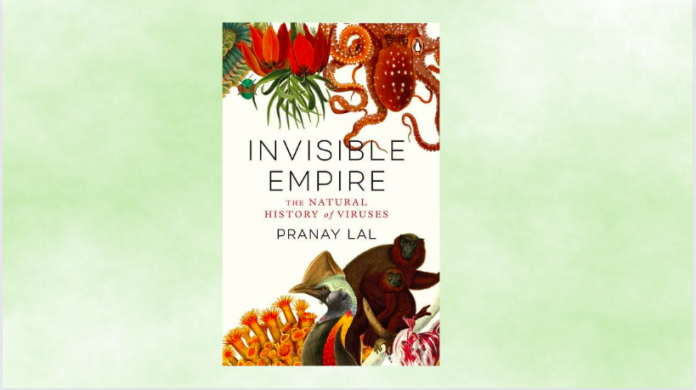Invisible Empire: The Natural History of Viruses
by Pranay Lal
Publisher: Penguin Viking (2021)
I had Invisible Empire in my want-to-read shelf on goodreads for quite some time. So, when I got an opportunity to review this book from Atta Galatta, I jumped at it. It was a like a match made with the reader right from the beginning.
Pranay has done a fabulous job at narrative with keeping a fair mix of anecdotes, informational references, and storytelling. Being a biology student in the past, this book gave me an opportunity to reconnect with the subject and go back to my curriculum books, especially at the point when classification and taxonomical ranks were discussed.
From being an engaging read to an eye opener, this book let me travel through it. Knowing the natural history of viruses through a different lens rather than just having a an overview of them was fascinating for me. This book tiles up the idea of viruses, what we have known so far about them, and what level of knowledge we possess to truly understand them at this point of time.
Starting with a brief context on microbes, the ecosystem, their evolution that took place for nearly 3 billion years that lead to conditions for multicellular life to emerge – the book had a pace that grabs the reader’s attention. Along with the informative descriptions were the fascinating illustrations that made it possible to visually understand and also to appreciate how lucky one would be to have a high-powered microscope around to see a variety of life forms around us!
I found one particular line really relatable – “Viruses are mostly just dozens of genes wrapped in a coat or shell of protein”, the very same thing that we fear so much.The story of how Pasteur’s vaccine for rabies was developed using the process of attenuation – gradual reduction of severity of disease was interesting also because at that point of time when pathogen hadn’t been identified.
The text of the book is very approachable, that means you don’t have to be a biology student or have a background in the subject to understand. Although, having prior knowledge helps, you can always catch up as the books takes you through it in stages.
Learning about syncytins, the envelope genes (viral protein from endogenous retroviruses) that help in functions of placentation in placental mammals was quite thought-provoking. Knowing that our gut houses many microbes, who essentially eat what we eat, and perform a specialised function of their own was also interesting. The interdependence of our life forms on microbes becomes so evident that one starts to see how wonderfully helpful microbes are and not all are of the harmful kind that we need to be worried for.
This book rightly passes on the message as to how little we know about the microbial world and that the pandemic has once thrown light on how we must make amends to purpose the goodness and versatility of viruses.
I can say that this book has instilled the curiosity in me to know more about the viruses, their usefulness and the journey of knowing them has just begun as I lookout for more books that talks about them as beautifully as this book did.






RELATED ARTICLESMORE FROM AUTHOR
Euclid in The Rainforest: Discovering Universal Truth in Logic and Math